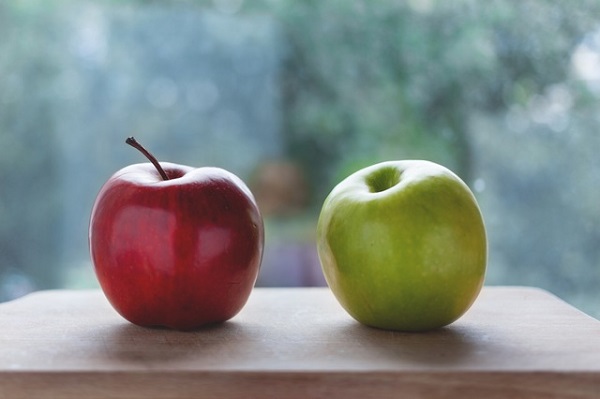
0800 377 7507
Get in touchGlorious Apples
Fruit, including glorious apples, have been grown in the UK as a cultivated crop since the Roman occupation. Specially cultivated apple varieties spread across Europe to France, arriving in England at around the time of the Norman Conquest in 1066. The Crab-tree apple or the Wild Apple Tree may be a descendant of these early varieties and that is why they are so prized by many.
It was Henry VIII who instructed his fruiterer, Richard Harris, to establish the first large scale orchards at Teynham in Kent and that is when our love affair with the apples really took off.
With Autumn well under way, Molly Maid, the house cleaning experts say it is the ideal time to harvest apples, but with so many varieties to choose from in Britain, it can be confusing to know how best to use the different varieties. If you have a glut of an apples growing in your garden, it is always a good idea to think about freezing them to be used later in the year in recipes.
Bramley
Fruit shape: Flat-round
Fruit colour: Green
Flesh colour: Cream
Cooking result: Puree
Flavour style: Sharper and more acidic which mellow upon cooking.
- Good for cooking and ideally suited for apple pies, crumbles and baked apples.
- Good for juice
- Good for hard cider
The Bramley apple is one of the oldest varieties in British and was grown from a pip of unknown origin by Mary-Ann Brailsford in a cottage garden in Southwell, Nottinghamshire between 1809 and 1813.
Discovery
Fruit shape: Round or squat
Fruit colour: Pink to Red
Flesh colour: Cream with a pink tinge
Flavour style: Sweet and Sharp
- Good for eating fresh from the fruit bowl!
- Excellent for juicing.
Discovery although not as old as some varieties, but still very popular was found in the 1940s is by a fruit farm worker in Langham, Essex, who planted some pips of Worcester in his garden. Making Discovery a Worcester seedling.
Braeburn
Fruit shape: Elongated
Fruit colour: Green with a red stripe
Flesh colour: White or cream
Flavour style: Aromatic yet slightly tart
- Great all round eating apples as firm.
- Good for cooking in savoury or in tarts or flans where the apple needs to stay firm. Try this delicious Braeburn and Almond Sheet Tart:
- Or for a more savoury twist why not try an apple and chili jelly?
Although we see these on our supermarket shelves, Braeburns are not historically native to the UK as they were originally discovered in New Zealand in the 1950s.
Cox
Fruit shape: Round-conical
Fruit colour: Green background colour overlaid with redder stripes resulting in a red/green colour usually with some light brown russet
Flesh colour: Cream
Flavour style: Honeyed and aromatic
- Great for eating when freshly picked in October with a crisp, sweet texture. With such a delicious eating apple, the less involved when cooking with it, the better such as with pancakes.
- Alternatively, Raymond Blanc recommends using Cox’s in his Tart Tatin recipe
The Cox is regarded as one of the UK’s oldest apple varieties. The original variety was raised from seeds of a Ribston Pippin in about 1825 at Colnbrook Lawn near Slough by Richard Cox. Richard Cox died in 1845 but the variety, named Cox’s Orange Pippin, was introduced by Charles Turner in about 1850.
Worcester Pearmain
Fruit shape: Conical
Fruit colour: Green/yellow background colour is covered almost completely by a bright red top colour
Flesh colour: White
Fruit size: Medium
Flavour style: Sweet with a strong aromatic scent and unique strawberry-like flavour.
- Great eating apple straight from the fruit bowl or a light apple and frangipani tart
The variety is believed to be a seedling from Devonshire Quarrenden and was raised by Mr Hale near Worcester and is one of Britain’s oldest varieties being first introduced in 1875.
Spartan
Fruit shape: Round conical
Fruit colour: Crimson
Flesh colour: Intense white
Fruit size: Medium
Flavour style: Refreshing and sweet
- Good and delicious as an eating apple, but also great for making apple sauce. Try an Apple Crisp recipe as a change to crumble.
The variety was raised in British Colombia by R.C.Palmer in 1926. It was introduced in 1936.
Rubens
Fruit shape: Slightly oval
Fruit colour: Bi-coloured with red blush, dark stripes and golden yellow ground colour
Flavour style: Medium-sweet with a classic apple ‘tang’ and hint of melon.
- Good for: Traditional dessert such as tarts and crumbles and storage due to its slow oxidisation benefits. Try making some cinnamon apple rings for something a little different. Rubens apples are ideal for this.
The Rubens is a relative newcomer to the UK, but was voted as Britain’s Tastiest Apple in 2010 and 2011. It is in season from October – April.
In advance of Apple Day on 21st October, start harvesting and practicing your recipes now to celebrate these delicious fruits which can keep a doctor away!
